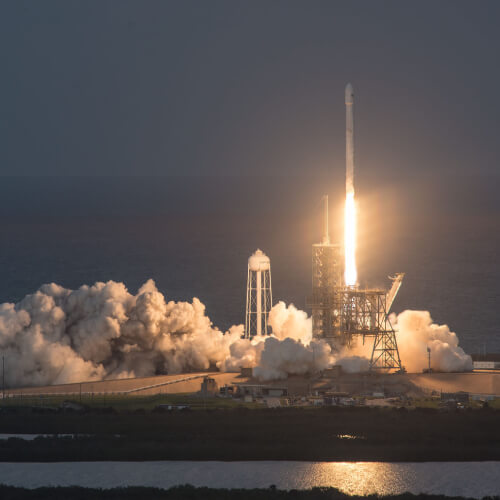
India's satellite sector is set to emerge as the next battleground for the Indian telecom industry. Jio Platform's newly formed subsidiary has acquired Global Mobile Personal Communication by Satellite (GMPCS) license earlier this month.
The company followed this up by forming a 51:49 joint venture with Luxembourg-based SES Group to provide satellite broadband services across the country.
While SES will provide a capacity of up to 100 Gbps, Jio's extensive reach in the country will help the joint venture in capturing the market opportunity.
Figure 1:  Jio-SES will be using a combination of GEO and MEO satellites - unlike rival SpaceX (pictured) and their Starlink low earth orbit constellation.
Jio-SES will be using a combination of GEO and MEO satellites - unlike rival SpaceX (pictured) and their Starlink low earth orbit constellation.
(Source: SpaceX via SES media kit.)
Jio and SES will develop gateway infrastructure and provide satellite data and connectivity services to both consumers and enterprise. The exception is aeronautical and maritime companies, which are be serviced directly by SES.
GEO, MEO or LEO
Interestingly, the company has adopted a different approach from the rest of the players.
While most satellite companies would be using low earth orbit satellite (LEO) constellations, Jio-SES will be using a combination of geostationary equatorial orbit (GEO) and medium earth orbit (MEO).
It hopes to deliver "multi-gigabit links and capacity to enterprises, mobile backhaul and retail customers across the length and breadth of India and neighbouring regions."
It is unclear why Jio has opted for GEO and MEO satellites, but it may lead to policy-based conflict in the country.
The other players in India, including Bharti's OneWeb, Elon Musk's Starlink, Tata-Telesat and Amazon's Kuiper, will be using LEO constellations.
OneWeb has formed an alliance with Hughes Communications to distribute services in India. The company plans to focus on the government and enterprise sectors for satellite broadband and for use as backhaul by telecom service providers.
By the end of this year, OneWeb and maybe even Starlink services are likely to be available, while Jio-SES combined has not mentioned the launch time frame.
No early-mover advantage for Starlink
While Starlink was the first company to start operations in the country, it hasn't been able to leverage this.
It started pre-booking (for $99) before actually acquiring a license. This led to the government barring it from signing up further customers, while refunding deposits. The company is yet to receive the required approvals to provide services in India.
Want to know more? Sign up to get our dedicated newsletters direct to
your inbox
As yet, the price points of satellite services are unclear in India. It's a price-sensitive market, so players must get the pricing right.
Added to this, India has good 4G coverage now at affordable rates. In this scenario, the adoption of satellite broadband in urban and tier-1 and tier-2 cities will be limited.
Related posts:
— Gagandeep Kaur, contributing editor, special to Light Reading
Read more about:
AsiaAbout the Author(s)
You May Also Like










